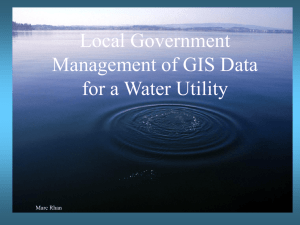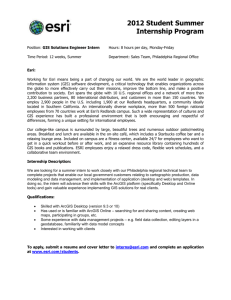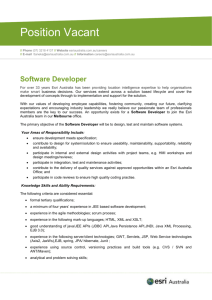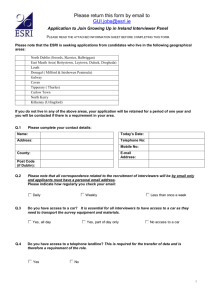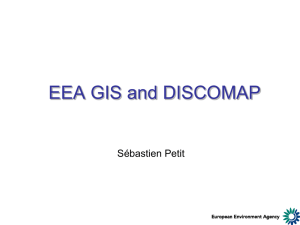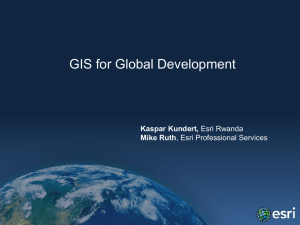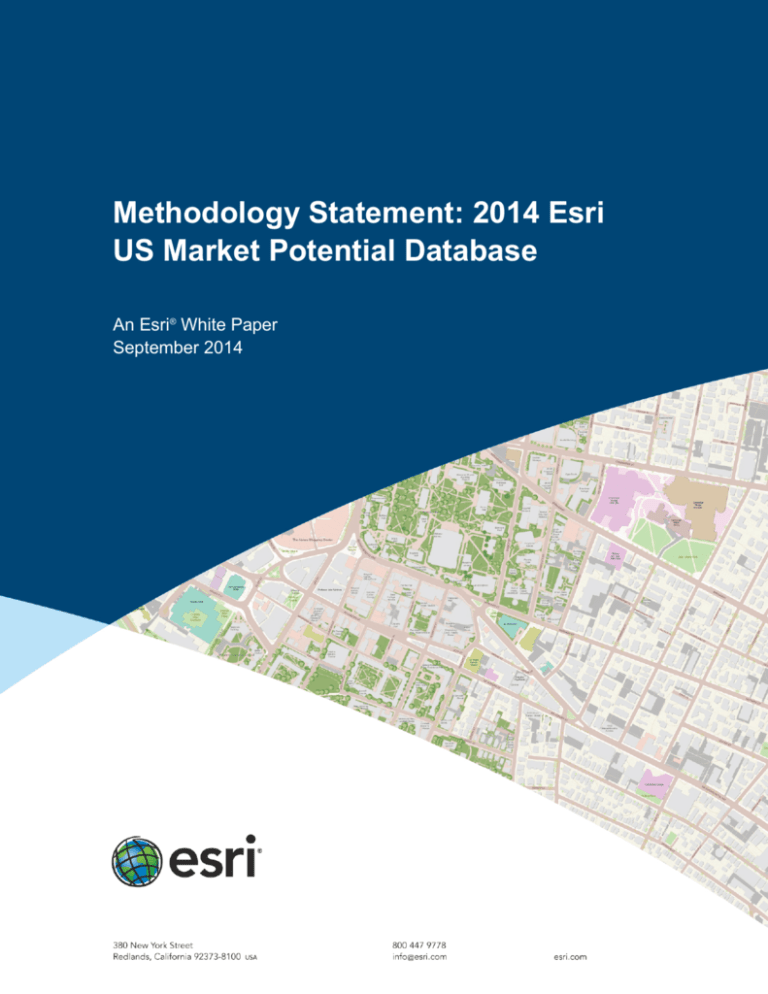
Methodology Statement: 2014 Esri
US Market Potential Database
An Esri® White Paper
September 2014
Copyright © 2014 Esri
All rights reserved.
Printed in the United States of America.
The information contained in this document is the exclusive property of Esri. This work is protected under United States
copyright law and other international copyright treaties and conventions. No part of this work may be reproduced or
transmitted in any form or by any means, electronic or mechanical, including photocopying and recording, or by any
information storage or retrieval system, except as expressly permitted in writing by Esri. All requests should be sent to
Attention: Contracts and Legal Services Manager, Esri, 380 New York Street, Redlands, CA 92373-8100 USA.
The information contained in this document is subject to change without notice.
Esri, the Esri globe logo, Tapestry, esri.com, and @esri.com are trademarks, service marks, or registered marks of Esri in the
United States, the European Community, or certain other jurisdictions. Other companies and products or services mentioned
herein may be trademarks, service marks, or registered marks of their respective mark owners.
J9672
Methodology Statement: 2014 Esri
US Market Potential Database
An Esri White Paper
Contents
Page
Market Potential Index ..........................................................................
1
How Esri Calculates Market Potential ..................................................
1
Esri's Data Development Team.............................................................
2
Esri White Paper
i
J9672
Methodology Statement: 2014 Esri
US Market Potential Database
Market Potential
Index
How Esri Calculates
Market Potential
Esri's 2014 Market Potential database measures the likely demand for a
product or service in an area. The database includes an expected number
of consumers and a Market Potential Index (MPI) for each product or
service. An MPI compares the demand for a specific product or service in
an area with the national demand for that product or service. The MPI
values at the US level are 100, representing overall demand. A value of
more than 100 represents higher demand, and a value of less than
100 represents lower demand. For example, an index of 120 implies that
demand in the area is likely to be 20 percent higher than the US average;
an index of 85 implies a demand that is 15 percent lower.
Esri computes Market Potential by combining 2014 Tapestry™ Segmentation data with
Doublebase® 2013 data from GfK MRI. Doublebase 2013 is an integration of information
from four consumer surveys. Each survey respondent can be identified by Tapestry
segment, so a rate of consumption by Tapestry segment can be determined for a product
or service for any area.
The Expected Number of Consumers (households or adults) for a product or service in an
area is computed by applying the consumption rate for Tapestry market segment "n" to
households or adults in the area belonging to Tapestry segment "n," and summing across
67 Tapestry segments.
67
Expected Number of Consumers = ∑ (Count n × Consumption Rate n )
n =1
The Local Consumption Rate for a product or service for an area is computed as the ratio
of the expected number of consumers for a product or service in the area to the total
households or adults in the area.
Local Consumption Rate =
Expected Number of Consumers
Base Count
The Market Potential Index for a product or service for an area is the ratio of the local
consumption rate for a product or service for the area to the US consumption rate for the
product or service, multiplied by 100.
Market Potential Index =
Esri White Paper
Local Consumption Rate
× 100
US Consumption Rate
Methodology Statement: 2014 Esri US Market Potential Database
J9672
Esri's 2014 Market Potential database incorporates the next generation of Tapestry
Segmentation with 2013's major overhaul of the list of products and groupings. Data for
more than 2,600 items, organized into 35 categories, representing goods, services,
attitudes, and activities collected from GfK MRI surveys, are included. Unless otherwise
noted, each item refers to consumer spending or behavior in a 12-month period. The a or
h following the five-digit product code denotes a consumer base of adults or households,
respectively.
Products and services, such as apparel items and expenditures, electronics, civic activities
and political affiliation, financial accounts and services, groceries and household
products, health-related items, Internet activities, leisure activities, media-related items,
personal care services, cell phones and service, shopping, sports, and travel activities are
included. Information on consumer confidence, buying styles, values, and general
attitudes are included as well.
Esri's Data
Development Team
Led by chief demographer Lynn Wombold, Esri's data development team has a 35-year
history of excellence in market intelligence. The combined expertise of the team's
economists, statisticians, demographers, geographers, and analysts totals nearly a century
of data and segmentation development experience. The team develops datasets, including
annual demographic updates, Tapestry Segmentation, Consumer Spending, Market
Potential, and Retail MarketPlace, which are now industry benchmarks.
For more information about the Market Potential database, please call 1-800-447-9778.
September 2014
2
Esri inspires and enables people to positively impact their
future through a deeper, geographic understanding of the
changing world around them.
Governments, industry leaders, academics, and nongovernmental
organizations trust us to connect them with the analytic knowledge
they need to make the critical decisions that shape the planet. For
more than 40 years, Esri has cultivated collaborative relationships
with partners who share our commitment to solving earth’s most
pressing challenges with geographic expertise and rational resolve.
Today, we believe that geography is at the heart of a more resilient
and sustainable future. Creating responsible products and solutions
drives our passion for improving quality of life everywhere.
Contact Esri
380 New York Street
Redlands, California 92373-8100 usa
1 800 447 9778
t 909 793 2853
f 909 793 5953
info@esri.com
esri.com
Offices worldwide
esri.com/locations
Printed in USA

